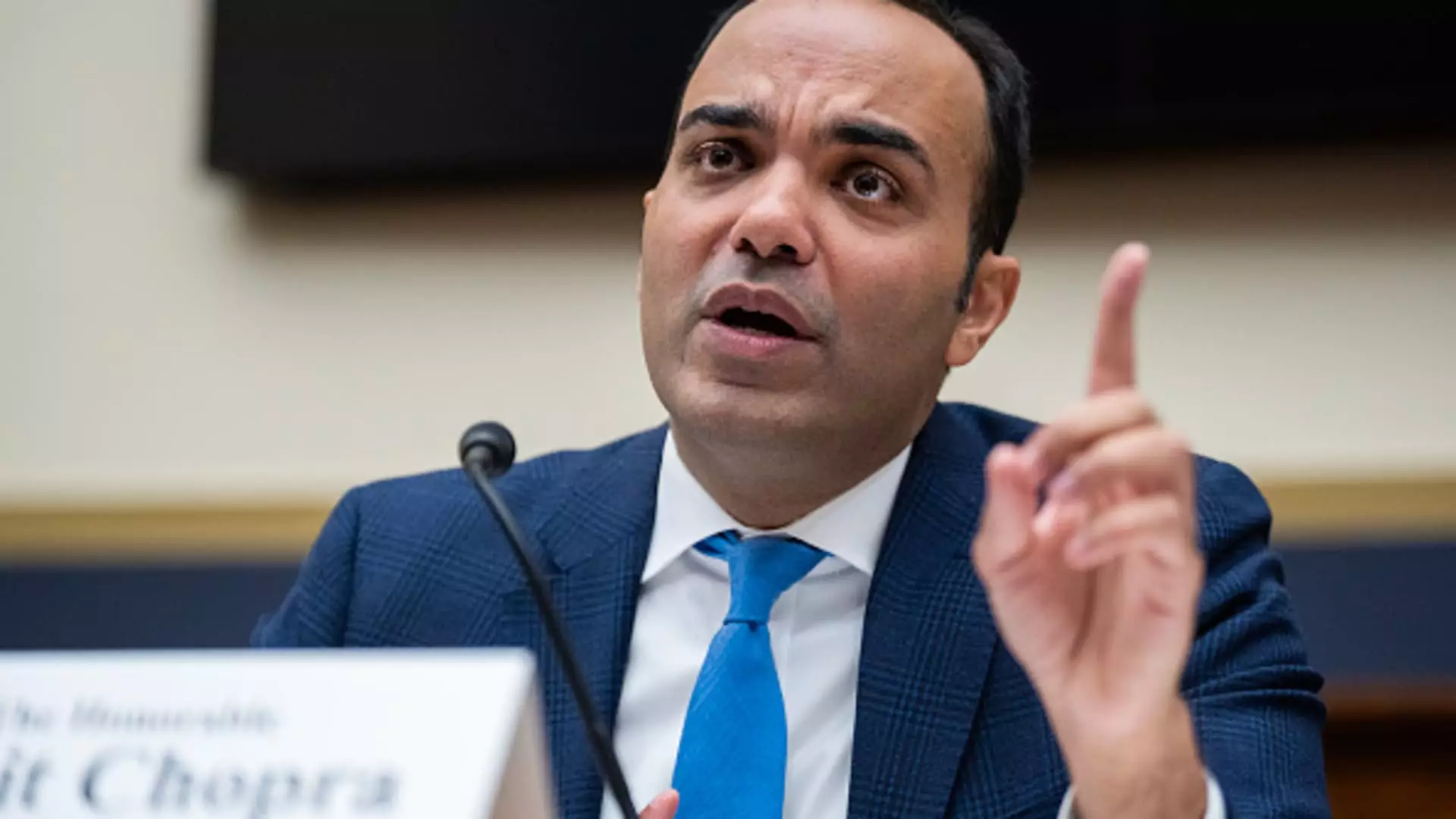On Thursday, the Consumer Financial Protection Bureau (CFPB) revealed a significant regulatory change aimed at reforming how banks charge overdraft fees. This groundbreaking rule is poised to save American consumers approximately $5 billion each year, a welcome relief for many struggling under the weight of financial fees that have long been considered excessive. Historically, banks have charged an average of about $35 per overdraft transaction, a figure that has burdened countless consumers; under the new framework, banks may choose to implement a much lower fee of $5, thus potentially revolutionizing the overdraft landscape.
CFPB Director Rohit Chopra emphasized the importance of this rule, stating, “For far too long, the largest banks have exploited a legal loophole that has drained billions of dollars from Americans’ deposit accounts.” This sentiment underscores a growing recognition that industry practices must evolve to better serve consumer interests. By imposing restrictions on overdraft fees, the CFPB aims to eliminate what it describes as “excessive junk fees,” while fostering transparency around interest rates associated with such loans.
Interestingly, the revenue generated from overdraft fees has seen a downward trend in recent years, even though it has historically been a lucrative revenue stream for banks. According to the CFPB, these fees have brought in approximately $280 billion since 2000. However, major banks such as JPMorgan Chase and Bank of America have already started to adjust their policies, by either lowering fees or limiting instances in which fees are charged. Some banks have even gone as far as to eliminate overdraft fees altogether, showcasing a shift in how financial institutions perceive and react to consumer sentiment regarding illegitimate fees.
The new rule, which is targeted specifically at banks and credit unions boasting a minimum of $10 billion in assets, signifies a concerted effort by the CFPB to foster accountability in the banking sector. Amid ongoing scrutiny, these reforms reflect broader efforts to enhance consumer protection in financial markets, regardless of substantial pushback from banking groups.
Despite the promising nature of this regulation, the CFPB is not without its opponents. U.S. banking organizations have expressed strong dissent against these reforms. The skepticism towards the overdraft rule stems from the fear that limiting overdraft penalties will inadvertently restrict access to essential banking services for those who may rely on them. In a broader context, banks argue that minimizing the fee could push customers towards alternative lending solutions, such as payday loans, which can come with their own set of complications and exorbitant fees.
Additionally, the Consumer Bankers Association has articulated its concerns, indicating it is “exploring all options” to combat the impending rule. This illustrates a larger ongoing tug-of-war between regulatory bodies focused on consumer advocacy and financial institutions prioritizing profitability.
Scheduled to come into effect on October 1, 2025, the ultimate implementation of this rule remains uncertain, particularly reflecting the looming political changes expected with the upcoming presidential election. Speculation abounds concerning the future direction of the CFPB following a possible shift in leadership, particularly with the potential appointment of someone aligned with more traditional banking views. Such changes could dramatically alter the future landscape for anti-junk fee measures.
Looking ahead, it’s crucial for consumers and banking policy advocates to monitor how this rule, and any subsequent adjustments or repeals, will impact access to banking services. The regulation of overdraft fees marks just one aspect of the conversation surrounding responsible banking practices, but it represents a critical step towards greater transparency and accountability within the financial industry.
While this new overdraft fee rule set forth by the CFPB indicates a vital change aimed at protecting consumers, the ensuing battles between regulatory bodies and financial institutions underscore the complexities involved in making lasting changes to banking practices. As stakeholders navigate these changes, the focus must remain on striking a balance that prioritizes consumer welfare while maintaining the viability of banking operations.


Leave a Reply